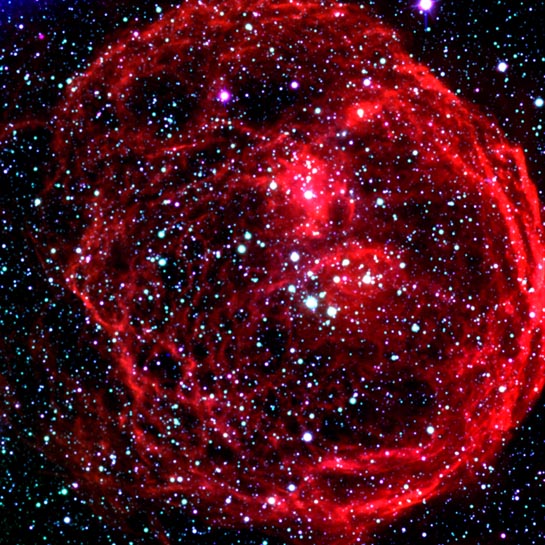
Nebula
RA 5hr 43m 16.17s Dec -67° 50' 54.16"
Dorado
170,000 light years
6.70 x 6.70 arcminutes
North is 0.0° right of vertical
ESO
November 17, 1999
Widefield view: N0912
ABOUT THIS IMAGE:
This image shows a three-color composite of the N 70 nebula. It is a "Super Bubble" in the Large Magellanic Cloud (LMC), a satellite galaxy to the Milky Way system, located in the southern constellation of Dorado at a distance of about 160,000 light-years. This photo is based on CCD frames obtained with the FORS2 instrument in imaging mode in the morning of November 5, 1999.
N
70 is a luminous bubble of interstellar gas, measuring about 300 light-years
in diameter. It was created by winds from hot, massive stars (located
in the center of the bubble) and supernova explosions and the interior
is filled with tenuous, hot expanding gas. An object like N70 provides
astronomers with an excellent opportunity to explore the connection between
the life-cycles of stars and the evolution of galaxies.
Very massive stars profoundly affect their environment. They stir and
mix the interstellar clouds of gas and dust, and they leave
their mark in the compositions and locations of future generations of
stars and star systems.
From Wikipedia:
A superbubble is a cavity which is hundreds of light years across, and is filled with very hot gas blown into the interstellar medium by multiple supernovae and stellar winds. Our Solar System lies near the center of an old superbubble, known as the Local Bubble, whose boundaries can be traced by a sudden rise in dust extinction of stars at distances greater than a few hundred light years.